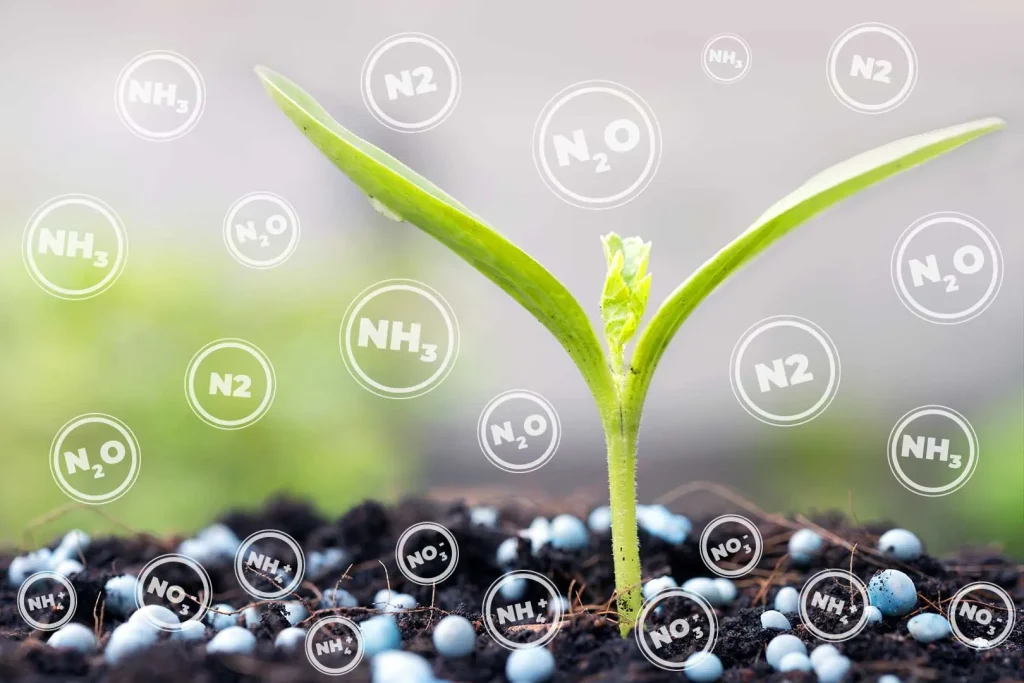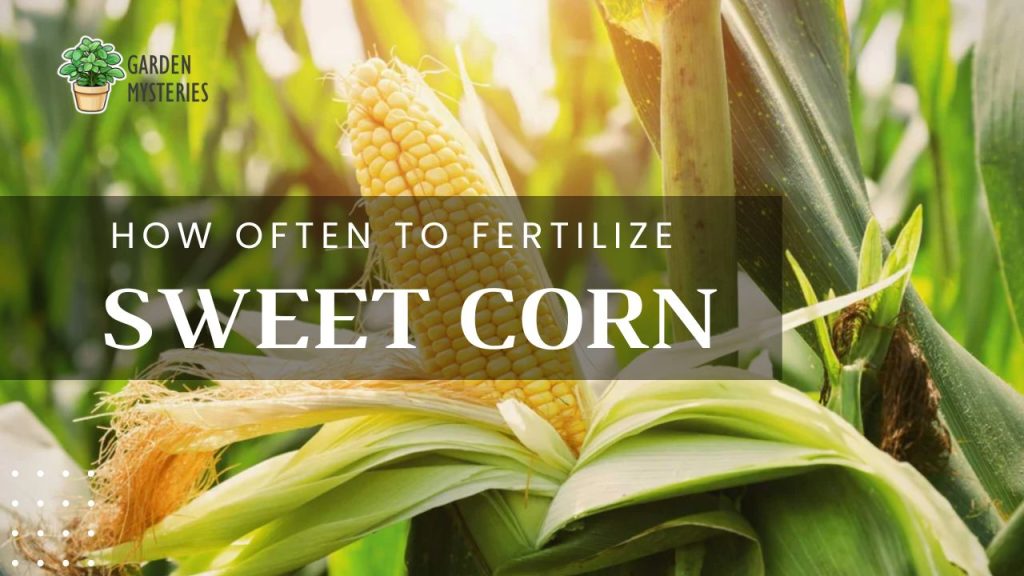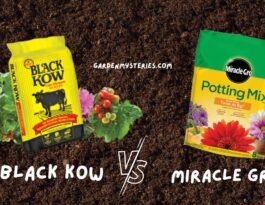Corn Care 101: How Often to Fertilize Sweet Corn
I used to wonder how often I should fertilize my corn when I started at first, but then I learned the rule of thumb. You need to start with a pre-planting boost, side-dress when it’s knee-high, and top it up only if it looks hungry.
For detailed insights, keep reading and keep your corn thrives.
What Kind of Fertilizers Do Sweet Corn Plants Need?
Sweet corn plants, like all plants, require a specific set of nutrients to grow and thrive. Understanding the nutrient needs of sweet corn is essential for selecting the right fertilizers. Here are the key nutrients sweet corn plants can use and the types of sweet corn fertilizer that can provide them:
Nitrogen (N):
- A lot of nitrogen is essential for the overall growth and development of sweet corn.
- It promotes leafy growth, which is important for photosynthesis and energy production.
- Nitrogen deficiency can result in stunted growth and reduced yields.
Fertilizer Types: You can use various nitrogen-containing fertilizers, including:

- Urea: A common synthetic source of nitrogen.
- Ammonium nitrate: Provides both nitrogen and ammonium ions.
- Fish emulsion: An organic source of nitrogen.
- Blood meal: Another organic option high in nitrogen.
Phosphorus (P):
- Phosphorus is essential for root development, flowering, and fruiting in sweet corn.
- It plays a good role in energy transfer and overall plant metabolism.
- A lack of phosphorus can result in poor root development and delayed maturity.
Fertilizer Types: Phosphorus can be supplied through fertilizers like:
- Superphosphate: Contains a high concentration of phosphorus.
- Bone meal: An organic source of phosphorus.
Potassium (K):
- Potassium is nice for sweet corn’s overall health and stress resistance.
- It helps regulate water uptake and nutrient transport within the plant.
- A deficiency can cause weak stalks, poor kernel development, and susceptibility to disease.
Fertilizer Types: Potassium can be supplied through:
- Potash (potassium chloride): A common synthetic source.
- Sulfate of potash (potassium sulfate): Another synthetic option.
- Greensand: An organic source of potassium.
Secondary Nutrients and Micronutrients:
- Sweet corn also requires secondary nutrients like calcium (Ca) and magnesium (Mg) and micronutrients like iron (Fe), zinc (Zn), and manganese (Mn) in smaller quantities.
- These nutrients are essential for overall plant corn health, nutrient uptake, and enzyme activation.
Fertilizer Types: Secondary and micronutrients can often be supplemented with the use of complete fertilizers that contain these elements in addition to N, P, and K. Soil ph tests can help determine if any specific deficiencies need to be addressed to grow corn.
When to Fertilize Sweet Corn?
Sweet corn has specific nutrient requirements at various stages of its growth cycle. Fertilize sweet corn at the following key times:
- Pre-Planting: Apply a balanced fertilizer before planting based on soil test recommendations to provide initial nutrients.
- Side-Dress: Fertilize when corn is 6-12 inches tall, focusing on nitrogen (N) for vigorous vegetative growth.
- Top-Dress (if needed): Address nutrient deficiencies early in the growth stages.
- Foliar Feeding (if needed): Apply liquid fertilizer to leaves when required, especially in the morning or late afternoon for efficient uptake.
If you don’t mind sparing 5 minutes then let me tell you that I post articles regularly on my garden page. I try to cover all your inquiries, so don’t forget to stay updated. My last article was about whether squirrels eat broccoli or not.
How Often to Fertilize Corn?
Fertilizing corn at the right times and in the correct amounts is essential to achieving a healthy and productive crop. Before heading towards the garden details, you should have a glance at the short table:
| Stage | Timing | Nutrients |
| Pre-Planting | Before planting | Balanced N-P-K and micronutrients |
| Side-Dressing | When 6-12 inches tall (4-6 wks) | Primarily nitrogen (N) |
| Top-Dress (if needed) | Early growth stages | Targeted nutrients as needed |
| Foliar Feeding (if needed) | As needed | Liquid nutrients, mainly micronutrients |
| Monitoring | Continuously throughout season | Adjust based on visual cues |
The frequency of general fertilizer application for corn depends on several factors, including soil conditions, corn growth stages, and the type of fertilizer and manure being used. Let’s explore how often to fertilize corn in detail:

1. Pre-Planting Fertilization:
- Before planting sweet corn, it’s essential to apply a pre-planting fertilizer to provide the initial nutrients that the young seedlings will need.
- This pre-planting fertilizer typically contains a balanced mix of nutrients, including nitrogen (N), phosphorus (P), and potassium (K).
- Choose the best pre-planting fertilizer based on soil test recommendations to ensure the soil has the necessary nutrients to support initial growth.
- Add the fertilizer into the soil during soil preparation or use a no-till method for even distribution.
2. Side-Dress Fertilization:
- Side dressing is a common practice for corn that involves applying fertilizer directly to the soil alongside the corn rows during the growing season.
- The timing of side-dressing depends on the growth stage of the corn, usually when the young plants are about 6 to 12 inches tall.
- Nitrogen is the primary nutrient applied during side dressing because corn has a high demand for it during the vegetative growth stage.
- Ammonium-based fertilizers, like ammonium nitrate or urea, are commonly used for dressing.
3. Top-Dress Fertilization (Optional):
- Top dressing is similar to side-dressing but involves applying fertilizer on the soil surface around the corn plants.
- This method can be useful for addressing nutrient deficiencies or providing additional best nutrients if needed.
- Top-dress applications are typically done when corn is in its early growth stages.
4. Foliar Feeding (Optional):
- Foliar feeding involves applying a liquid fertilizer directly to the leaves of corn plants.
- It can be used as a supplement to soil-applied fertilizers to address nutrient deficiencies or provide a quick nutrient surplus.
- Foliar feeding is typically done early in the morning or late in the afternoon when the stomata of the leaves are open for maximum nutrient uptake.
5. Monitoring and Adaptation:
- Regularly monitor your corn plants throughout the growing season to assess their nutrient status.
- Pay attention to the color and appearance of the leaves; any signs of nutrient deficiencies should be addressed promptly.
- If you notice issues like yellowing leaves (indicating a nitrogen deficiency), adjust your fertilization plan accordingly by dressing or foliar feeding as needed.
6. Soil Testing and Adjustments:
- Conduct soil tests at least once a year to determine nutrient levels in your soil.
- Soil tests will help you make informed decisions about the type and amount of fertilizer to apply.
- Adjust your fertilization plan based on the results of soil tests to avoid over-fertilization and nutrient imbalances.
7. Environmental Considerations:
- Be mindful of environmental concerns when fertilizing corn. You should not add fertilizers that can leach into groundwater or runoff into nearby water bodies.
- Follow local regulations and best practices for fertilizer around application to minimize environmental impact.
When I Shouldn’t Fertilize My Sweet Corn Plants?
Avoid fertilizing sweet corn crops under certain conditions to ensure the health of your plants and minimize environmental impact. Here are instances when you shouldn’t fertilize your sweet corn:
- Late in the Season: Avoid fertilizing after the tassels and silks have emerged or after the pollination period. Late fertilization can lead to excessive vegetative growth instead of focusing on grain development.
- During Drought or Water Stress: Fertilizing during dry spells can stress corn plants further, as they struggle to absorb nutrients from dry soil. Water the plants adequately before applying fertilizer.
- Heavy Rain or Waterlogging: Fertilizing right after heavy rainfall or when the soil is waterlogged can result in nutrient runoff, wasting fertilizer and causing environmental harm.
- Extreme Heat: High temperatures can cause fertilizer burn on corn leaves, harming the plants. Avoid applying fertilizer during heatwaves.
- Excessive Fertilization: Over-fertilizing can lead to nutrient imbalances, environmental pollution, and reduced crop quality. Always follow recommended rates and guidelines.
- Without Soil Testing: Applying fertilizer without a recent soil test can lead to unnecessary nutrient application and potential soil imbalances. Soil tests ensure targeted and efficient fertilization for the root system.
- Without Monitoring: Don’t fertilize without monitoring plant health and nutrient status. Adjust fertilizer applications based on crop needs and visual cues.
How Much Fertilizer Do I Need Per Acre For Corn?
The amount of fertilizer you need per acre for corn depends on various factors, including soil test results, the specific nutrient requirements of your crop, and the type of fertilizer you’re using.

Typically, for corn, you’ll want to consider the following general guidelines:
| Nutrient | Approximate Requirement per Acre | Common Fertilizer Sources |
| Nitrogen (N) | 150-250 pounds (actual nitrogen) | Urea, ammonium nitrate, fish emulsion |
| Phosphorus (P) | 50-100 pounds (P2O5) | Superphosphate, bone meal |
| Potassium (K) | 100-200 pounds (K2O) | Potash, sulfate of potash, greensand |
| Calcium (Ca) | Varies based on soil test | Lime (calcium carbonate) |
| Magnesium (Mg) | Varies based on soil test | Epsom salt, dolomitic lime |
| Sulfur (S) | Varies based on soil test | Sulfur-containing fertilizers |
| Micronutrients | Based on soil test and deficiency signs | Micronutrient fertilizers, compost |
FAQs
When to fertilize corn with nitrogen?
The initial nitrogen application, often referred to as pre-planting or pre-emergence nitrogen fertilizer, should be applied before or during planting. This provides essential nutrients for the early stages of corn growth.
Is it okay to use slow-release fertilizers for corn?
Yes, slow-release granular fertilizers are suitable for corn as they provide nutrients gradually over time. They can help maintain consistent nutrient availability during the growing season.
How can I prevent nutrient imbalances when fertilizing corn?
Regular soil testing and follow the recommendations rates based on test results are essential. It will prevent nutrient imbalances and ensure optimal corn growth and yield.
Before you leave, you can check out another corn growing article I covered on 16-16-8 Liquid fertilizer: a good choice for your corn or not?






[…] making your own mix, you ensure your seedlings get a safe, nutrient-rich environment to […]